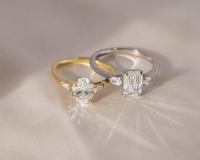Luxury Retail Experience Stable Recovery as Consumers Move Toward Meaningful Purchases

Amid a period of prolonged economic anxiety following the COVID pandemic and waves of global inflation, the luxury retail sector continues to experience a sustained recovery. Big names throughout Europe and North America have seen sales figures exceed expectations in Q1 2025, as a new emphasis upon meaningful and timeless purchases takes hold among consumers.
That growth is expected lead to global personal luxury good sales of around €380 billion by 2025, despite an estimated year-over-year growth of 7%, down from 9% in 2018, according to recent data from Bain & Company’s spring luxury report. The best response has been in the US, and closely followed by Europeans, where continued tourism recovery and consumer confidence have returned spending back to life.
“The crisis mindset we saw post-pandemic radically changed the way consumers relate to luxury,” said Claudia D’Arpizio, a partner at Bain & Company. “The appetite is becoming less about impulse trend-led buys, and much more about investment in both emotional and long-term value,” Ms. Ilyavi said.
This transformation has significantly affected the jewelry industry. Although flashy, high-fashion accessories have cooled, there has been a notable rise in heritage-inspired and made-to-order jewelry. Retailers say it’s because of a focus on sentiment, personalization and the symbolic value of jewelry.
Some categories have stood out, with engagement jewelry especially rising. Tiffany & Co., for instance, saw its engagement-focused sales spike 15 percent during the first quarter of 2025, with millennials showing interest in less-is-more and vintage-look rings.
Market analysts suggest this trend reflects broader social values, including sustainability and emotional authenticity.
“Customers are leaning toward engagement rings with delicate charm, often handcrafted or set with ethical stones,” said Marion Lefevre, regional director for De Beers Europe. “They’re not looking for scale or opulence, but something meaningful — something with a story.”
That change can be seen in shopping behavior online. Customized and ethical engagement rings have been on the rise among couples browsing on e-commerce platform like Blue Nile and Brilliant Earth. Pinterest search trends from early 2025 claimed there was a 22% increase in searches for “vintage engagement rings” and “artisanal ring designs.”
Beyond jewelry, the same patterns are being found in other luxury sectors including fashion, watches, and leather goods. Brands like Hermès, Rolex and Bottega Veneta have all noted strong sales for their classic products.
In the meantime, the return of tourism to pre-pandemic levels is also helping to support luxury sales in critical hubs like Paris, Milan and New York. According to the European Travel Commission, U.S. tourist arrivals in Western Europe increased by 11% in the first half of 2025, with shopping representing a 48.8% share of their expenditure.
“People want to make memories — and to commemorate them,” said Ana Rodríguez, the managing director of La Roca Village, a luxury shopping centre near Barcelona. “We have seen many visitors commemorate their trip with timeless purchases, particularly jewelry.”
However, challenges remain. As inflation, which is receding in many developed markets, still erodes consumer purchasing power, especially in the emerging bloocks. And luxury brands face increasing demands for sustainability and transparency.
ESG and the rise of its influence Not only has such progression seen but the role that environmental and social governance (ESG) metrics that help shape brand reputation has also become more influential. Consumers, particularly in the millennial and Gen Z generation, are more inclined to buy from companies that have announced a public goal around ethical sourcing, reducing carbon and responsible labor.
Face of the luxury: Imitation and innovation in the luxury industryAs the luxury industry responds to this changing landscape, analysts feel that the industry is moving from a relatively adolescent, aspiration phase to a more mature, value-driven stage. “It’s not all about status anymore,” D’Arpizio said. “Luxury today has to do with identity and with longevity and meaning.”
As meaningful consumerism grows, the leaders in the industry are trying to reach out to a client who includes depth beyond dazzle — and who view luxury not simply as an indulgence, but as an investment in sentiment.




